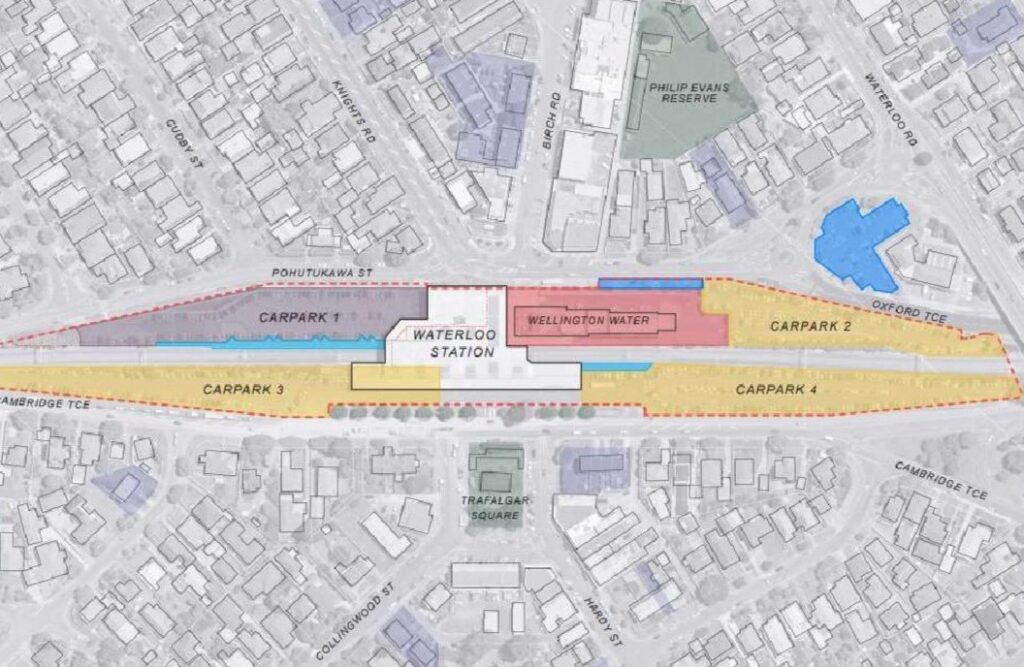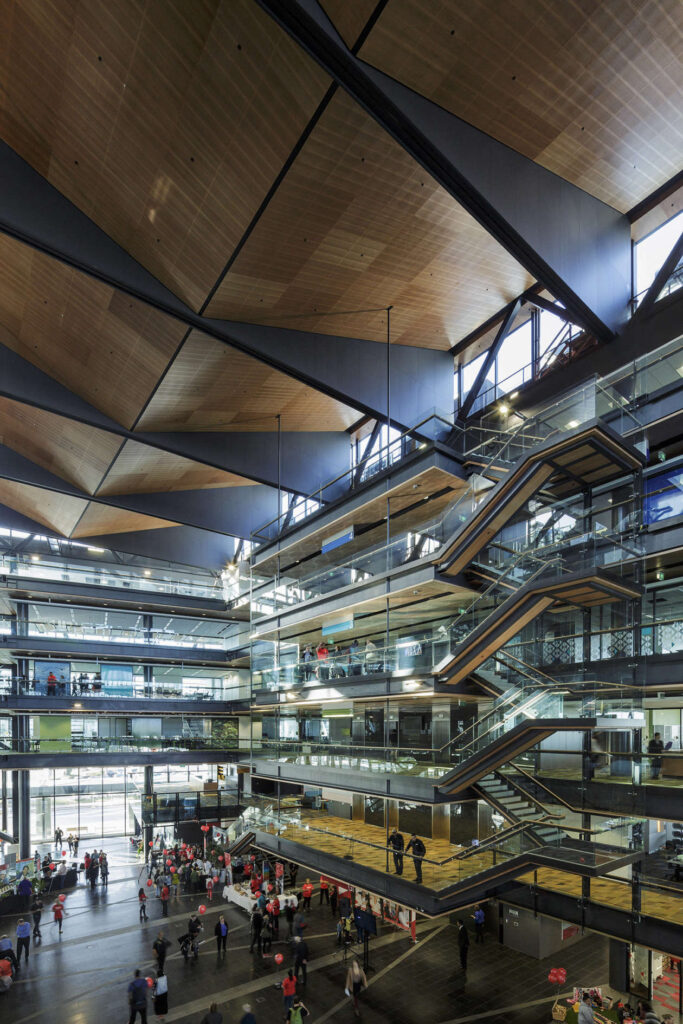The Waterloo Interchange of the not-too-distant feature could be a home to shops, offices, health services and apartments, as well as being a better integrated train and bus hub.
But there will be far fewer park & ride carparks.

A recent briefing by senior Metlink staff to Hutt City councillors was peppered with unfamiliar acronyms like TOD (Transport Oriented Development) and CDO (Complex Development Opportunity) but the vision outlined was clear enough – and one that is already evident at New Lynn, MIT Manukau, Puhinui Station and at any number of railway stations in cities overseas.
Our city, Greater Wellington Regional Council and the government, all have greenhouse gas emission targets that will require significantly greater use of public transport, active transport (walking, cycling, scootering) and reduced (another acronym!) VKT – vehicle kilometres travelled. New Zealand is a small, primary-export driven trading nation at the bottom of the world, and if we don’t meet international commitments we’ve made on the climate change front, customers may well turn their back on us.
But there are other factors driving the plans for a new Waterloo Interchange besides wanting a more seamless, warm and inviting environment for people getting on and off trains and connecting with buses and cycleways.
In short, the roof of the current interchange is munted. The current building was erected in the 1980s and the massive roof has about five years of life left (in fact, parts of it only three years).
With the clock ticking on the infrastructure, and the reality that the current station and carparking is like a large island dividing the east (Waterloo) and west (city) that is pretty much deserted at the weekend, there’s a big opportunity to better use the space. Counting the extensive carparking but excluding the tracks and corridor, there’s about 19,000m2 of developable land. Around one quarter of it is owned by the regional council, some by Hutt City Council (land across Oxford Tce., by the ambulance station) and the rest by KiwiRail (leased to GWRC).

Given the poor state of the roof, the first priority for any redevelopment will be a new transport hub, with Metlink recognising the need for much better/more provision for buses. Lifts and escalators will feature to complement stairs and ramps. There’s long term talk of a third railway line needed to be incorporated.
GWRC already has in its budget more than $20 million for that work – and it’s known that more will be needed.
Longer term also are ideas around using adjacent land – including some of the current carparks – for services for commuters. Convenience retail? Maybe childcare facilities? Maybe office buildings that might encourage ‘blue chip’ tenants like government departments.
Kainga Ora (Housing NZ) has already expressed interest in opportunities for social housing.
For Hutt City Council, and a Government (Labour or National) through its planning instruments pushing taller apartment buildings near public transport hubs, an significantly upgraded Waterloo Interchange may encourage more housing development in the vicinity, and prove to be a boost for the Waterloo shopping centre.
Much to ponder and plan ahead.
At this stage, it’s likely the existing interchange roof will be demolished in the six week Christmas period of 2025 or 2026 when demand for commuter services – and freight trains running on the Hutt Valley line – is lower.
Leave a Reply